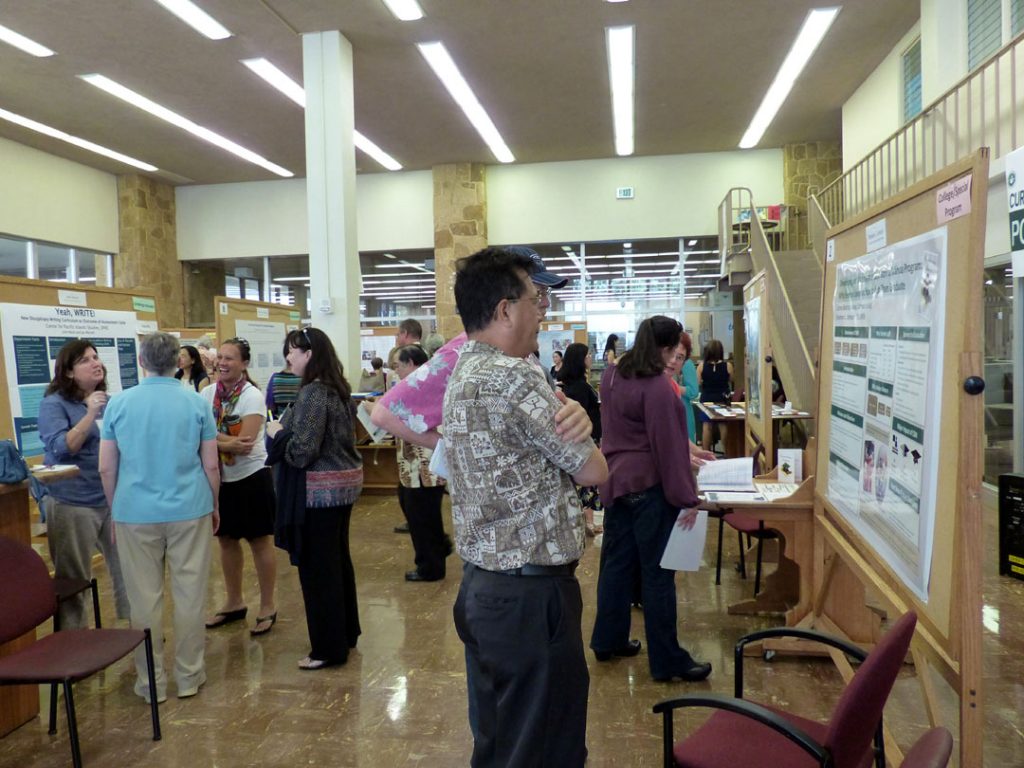
Undergraduate programs in the College of Tropical Agriculture and Human Resources (CTAHR) are typically managed solely within a single department. For some programs, the numbers of graduating students each year are low and not considered viable. There is administrative and legislative pressure to dissolve small programs at the University of Hawai‘i at Mānoa, including the agriculturally-focused BSc programs in Tropical Plants and Soil Sciences and Plant and Environmental Protection Sciences. The two departments within CTAHR that manage these programs conjoined to proactively revise their undergraduate programs. The outcome was a merged, redesigned program in agroecosystems having a common core, five areas of specialization and a focus on issues in the tropics. From the inception, developing an operable plan for program assessment was a priority. Consequently, even before selecting the program name, the program-level student learning outcomes (SLOs) were created to form the basis for program construction. A combined departmental meeting generated a curriculum map identifying how each of the core courses articulated with the SLOs, evaluated gaps and issues in the curriculum. Potential signature assignments were identified as indicators for assessment and templates for these were drafted. A number of opportunities and challenges arose throughout this process. Key to the successful creation of this program was encouraging faculty to think more broadly about the content of and rationale for what we teach and the anticipated knowledge and skills of graduating students. by M’Randa R. Sandlin, Helen Spafford, and Yao Z. Hill
Recommended Citation:
Sandlin, M., Spafford, H., & Hill, Y. (2016, April). An Interactive Approach to Curriculum Mapping. Poster session presented at the Assessment for Curricular Improvement Poster Exhibit at the University of Hawai’i at Mānoa, Honolulu, HI.
